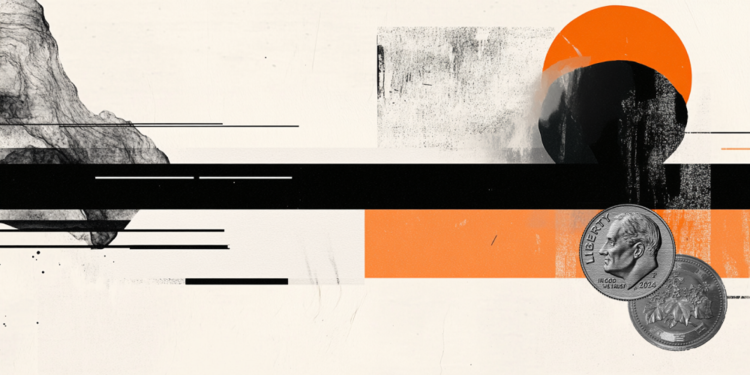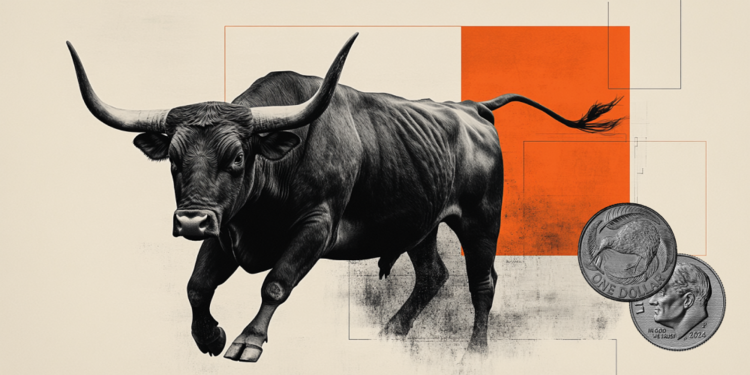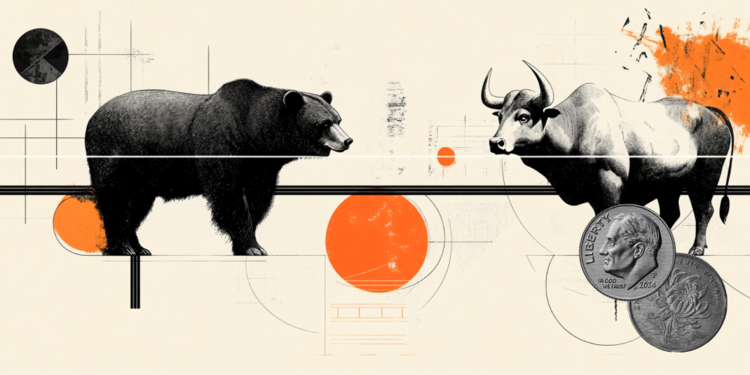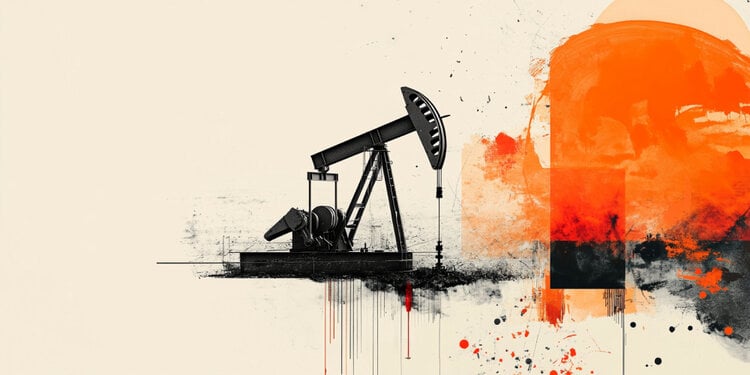- La Plata goes back below $ 38.50 as the bullish impulse fades near the annual maximum.
- The fortress of the US dollar weighs on silver while IPC data reflect persistent inflation, raising yields.
- The solid industrial data of China and Europe limit the fall of the XAG/USD.
The price of silver is trying to recover from Monday’s fall while the operators digest new economic data from China, the Eurozone and the United States.
After reaching a new annual maximum of $ 39.13 in the previous session, the profits at high levels pushed the XAG/USD again towards the key psychological level of 38.00 $.
At the time of writing, La Plata continues to quote within an ascending channel, with the action of the price sensitive to changes in the feeling of risk and short -term address of the US dollar.
The fortress of the US dollar weighs on silver while IPC data support yields
The June Consumer Price Index (CPI) showed that the general CPI rose 2.7% (interannual), in line with expectations, while the underlying IPC stood at 2.9%, slightly below the 3% consensus, but still well above the 2% of the Fed objective.
The lack of faster disinflation has moderated the expectations of a feat cut in September, with Fed funds now valuing a 59%probability, slightly lower than the one before the publication.
The market reaction reflects a revaluation of interest rates expectations, with treasure yields strengthening and the US dollar advancing. Despite China’s encouraging industrial figures, the US economy remains comparatively resistant, making the dollar more attractive in relation to other main currencies.
The solid industrial data of China and Europe limit the fall of La Plata
During the Asian session, the Gross Domestic Product (GDP) of China of the second quarter stood at 5.2% (interannual), slightly above the expectations of 5.1%, but below 5.4% of the same quarter last year. In quarterly terms, GDP grew 1.1%, exceeding 0.9%forecast. However, the most important thing for silver is that industrial production shot 6.8% annually, compared to 5.8%, pointing out a robust manufacturing activity.
Since silver is widely used in electronics, solar panels and industrial manufacturing, it is very sensitive to global production trends.
Adding to the impulse, the industrial production of the Eurozone also surprised upwards in May. Production increased by 1.7% (monthly) compared to an estimate of 0.9%, while annual production jumped 3.7% (compared to 2.9% forecast), marking a strong recovery of the April contraction. This general improvement in global industrial performance reinforces the case for a continuous physical demand of silver both in Europe and in Asia.
La Plata goes back below $ 38.50 as the bullish impulse fades near the annual maximum
After climbing to a new annual maximum of 39.13 $ on Monday, La Plata faced saleswoman that limited the rally. For Tuesday, the XAG/USD had backed towards the psychological level of $ 38.00, although the price action remains confined within an ascending channel in the 4 -hour graph.
The key support is observed at the psychological level of $ 38.00 and the simple mobile average (SMA) of 50 periods in $ 37.23, while the resistance remains at the annual maximum of 39.13 $.
4 -hour silver chart
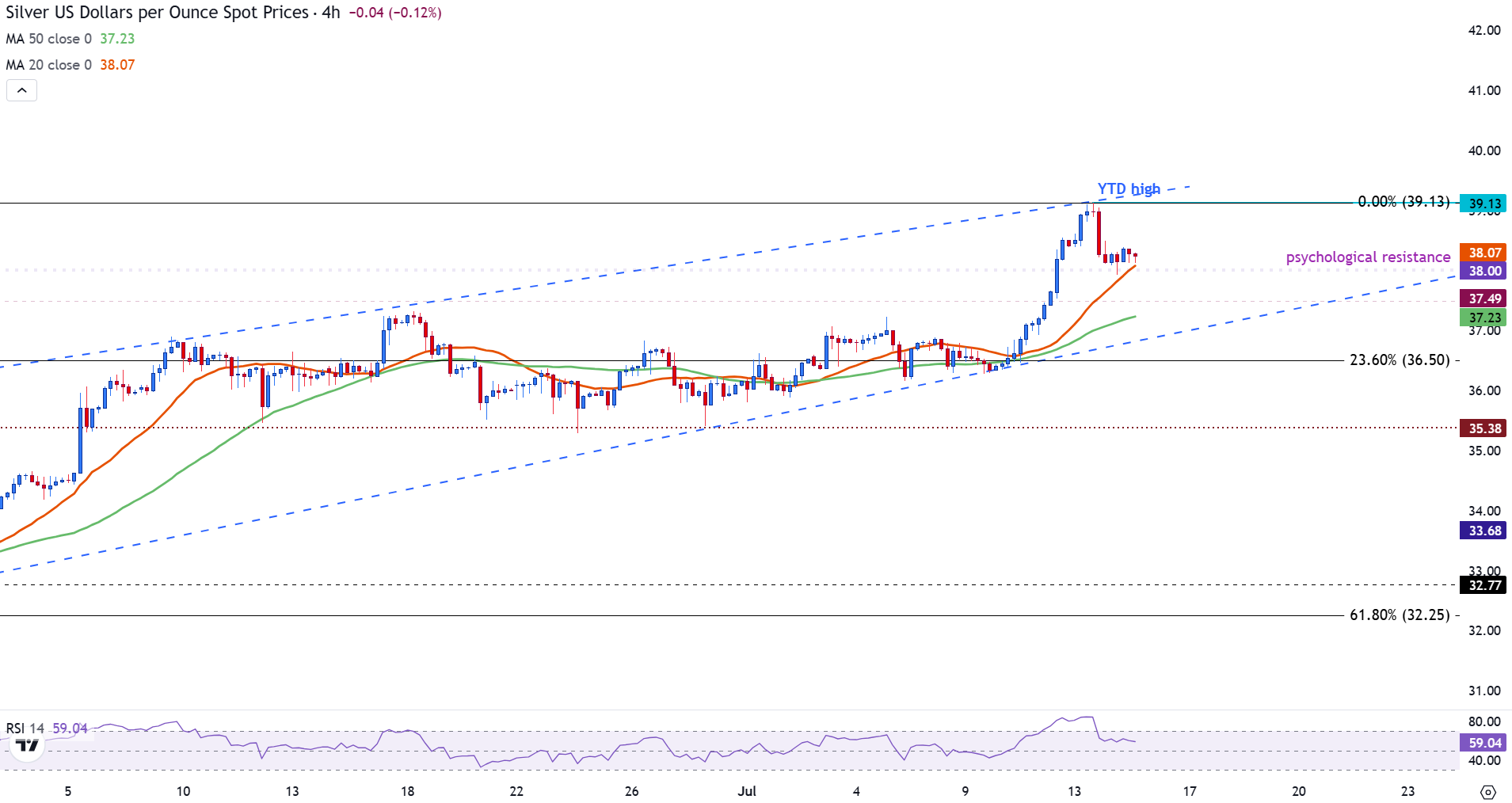
The Relative Force Index (RSI) has dropped to 58, reflecting a loss of impulse without pointing out overall conditions. Unless the bulls regain control above $ 38.50, La Plata runs the risk of sliding around $ 36.50, where the next significant support zone is located.
SILVER – FREQUENT QUESTIONS
Silver is a highly negotiated precious metal among investors. Historically, it has been used as a value shelter and an exchange means. Although it is less popular than gold, operators can resort to silver to diversify their investment portfolio, for their intrinsic value or as a possible coverage during periods of high inflation. Investors can buy physical silver, in coins or bullion, or negotiate it through vehicles such as the funds quoted in the stock market, which follow their price in international markets.
Silver prices can move due to a wide range of factors. Geopolitical instability or fears of a deep recession can cause the price of silver to shoot due to its safe refuge status, although to a lesser extent than that of gold. As an asset without performance, silver tends to climb with lower interest rates. Its movements also depend on how the US dollar (USD) behaves, since the asset is quoted in dollars (XAG/USD). A strong dollar tends to maintain the price of silver at bay, while a weaker dollar probably drives rising prices. Other factors such as investment demand, mining – silver supply is much more abundant than gold – and recycling rates can also affect prices.
Silver is widely used in the industry, particularly in sectors such as electronics or solar energy, since it has one of the highest electrical conductivities of all metals, surpassing copper and gold. An increase in demand can increase prices, while a decrease tends to reduce them. The dynamics in US economies, China and India can also contribute to price fluctuations: for the US and particularly China, its large industrial sectors use silver in several processes; In India, the demand for consumers for precious metal for jewelry also plays a key role in pricing.
Silver prices tend to follow gold movements. When gold prices go up, silver typically follows the same path, since their status as shelter is similar. The gold/silver ratio, which shows the number of ounces of silver necessary to match the value of an ounce of gold, can help determine the relative valuation between both metals. Some investors may consider a high ratio as an indicator that silver is undervalued, or that gold is overvalued. On the contrary, a low ratio could suggest that gold is undervalued in relation to silver.
Source: Fx Street
I am Joshua Winder, a senior-level journalist and editor at World Stock Market. I specialize in covering news related to the stock market and economic trends. With more than 8 years of experience in this field, I have become an expert in financial reporting.


